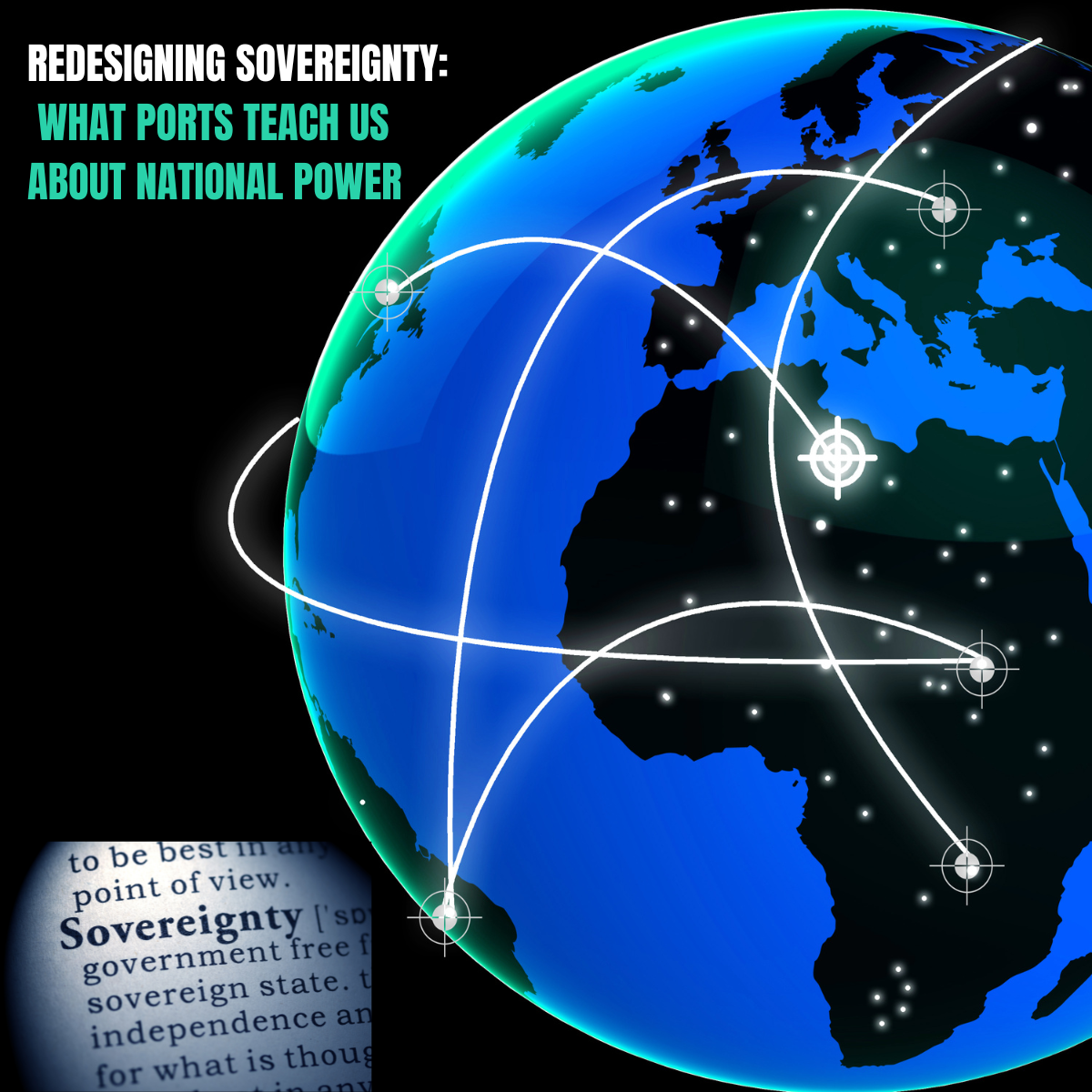When we think about sovereignty, we tend to focus on national borders, military strength, or political institutions. But in today’s fragmented and interdependent world, a new kind of sovereignty is emerging—one that asks:
Who controls the flows?
From energy and goods to data, emissions, and even workforce movement, the strategic weight of ports is no longer just logistical—it’s political, economic, and digital. Sovereignty today is being redefined—not by the lines on a map, but by the systems that enable movement, control, and access. And that has profound implications for how countries—and companies—compete, align, and adapt.
In this edition, I want to explore how ports have moved from the periphery of national power to the center, becoming enablers of strategy, security, and self-determination.
Ports as Strategic Leverage Points
Historically, ports were gateways—points of entry and exit for goods. Their role was largely economic and logistical. But the global disruptions of the last five years—pandemics, wars, supply chain breakdowns, cyberattacks, and climate disasters—have changed the calculus. Today, ports are becoming platforms for strategic orchestration. They are being reimagined as:
- Gatekeepers of national security
- Anchors of industrial policy
- Nodal points in the energy transition
- Testing grounds for digital sovereignty
The U.S. government’s recent push—through legislation like the SHIPS Act—to revitalize domestic shipbuilding and maritime capacity is not just about economic development. It’s a national strategy for preparedness, industrial revitalization, and strategic autonomy through maritime power.
Whether it’s port electrification, emissions tracking, or dual-use infrastructure, one thing is clear:
The future of sovereignty will be built—not only on land—but on the platforms that control and connect global flows.
Around the world, governments are rethinking ownership structures, reasserting control over concessions, and using port investments as tools to secure industrial ecosystems.
Rethinking Borders: Infrastructure Beyond Geography
As offshore energy platforms, modular terminals, and floating logistics hubs gain traction, the traditional definition of “territory” is shifting. These assets don’t always sit neatly within a geographic border—but their strategic influence is far-reaching. Control is no longer just physical—it’s systemic.
Sovereignty is no longer static. It’s mobile, digital, and increasingly defined by interoperability and flow resilience. That’s why new infrastructure—subsea cables, data ports, autonomous vessels—is blurring the lines between maritime operations and national systems.
Smart terminals equipped with emissions monitoring, connected microgrids, and real-time data aren’t just sustainable—they’re strategically independent.
This shift is creating new tensions and opportunities:
- Modular terminals and mobile energy hubs challenge traditional jurisdiction
- Digital layers—APIs, tracking systems, carbon inventories—introduce new forms of “control”
- Resilient corridors extend sovereignty outward, across space, policy, and alliances
Smart ports are becoming sovereign infrastructure in disguise. Ports that invest in connected systems, emissions transparency, and energy independence are better positioned not only to comply, but to lead.
The most resilient ports are not the biggest or busiest—they are the most adaptable.
Green Corridors—and What Comes Next
The rise of green shipping corridors is one of the most tangible signs of this strategic evolution. These aren’t just environmental commitments—they are instruments of industrial diplomacy.
By aligning emissions standards, bunkering infrastructure, and innovation goals across borders, governments are shaping the next wave of maritime trade flows.
But what happens when decarbonization is no longer enough? What if we began designing corridors not just around carbon, but around resilience, autonomy, and critical security?
Green corridors were the beginning. But the next generation of corridors will be designed not just for carbon—but for control, continuity, and capability.
We are beginning to see new corridor concepts emerge:
- Submersible cargo corridors, enabling stealthy, low-impact, autonomous operations beneath the surface
- Critical resource corridors, safeguarding mineral and energy supply chains from political and environmental disruption
- Intelligent infrastructure corridors, where routes adapt dynamically to real-time conditions using predictive data, not static timetables
These ideas may sound futuristic, but they are already being explored—by technology pioneers, by strategic planners, and by those of us working to bridge the gap between vision and deployment.
Sovereignty today may be defined not by the borders we defend, but by the corridors we design.
Strategic Capacity: A New Mandate for Leadership
To meet this new era of sovereignty, ports must think and act as strategic ecosystems, not just infrastructure assets. That means rethinking not only hardware, but:
- Governance models that protect national interest
- Talent pipelines that anchor long-term sovereignty
- Innovation partnerships that serve public purpose
Ports are becoming the testing grounds for everything we say we value: resilience, sustainability, sovereignty, and speed. And organizations that operate in or around them must rise to meet the complexity of this new mandate.
Final Reflection: Infrastructure Is the New Identity
We’ve entered an era where infrastructure is no longer passive—it’s expressive.
It tells the world who we are, what we believe, and how we intend to compete, connect, and endure in a world of constant disruption.
- The way a port electrifies tells us about its energy vision
- The cargo it tracks tells us about its economic priorities
- The partnerships it forms tell us about its political alignment
- The workforce it trains tells us about its future readiness
💬 How is your organization preparing for this shift?
📩 If you’re navigating strategic infrastructure, corridor planning, or future-fit innovation—let’s talk. Book a call or reply directly.

No responses yet